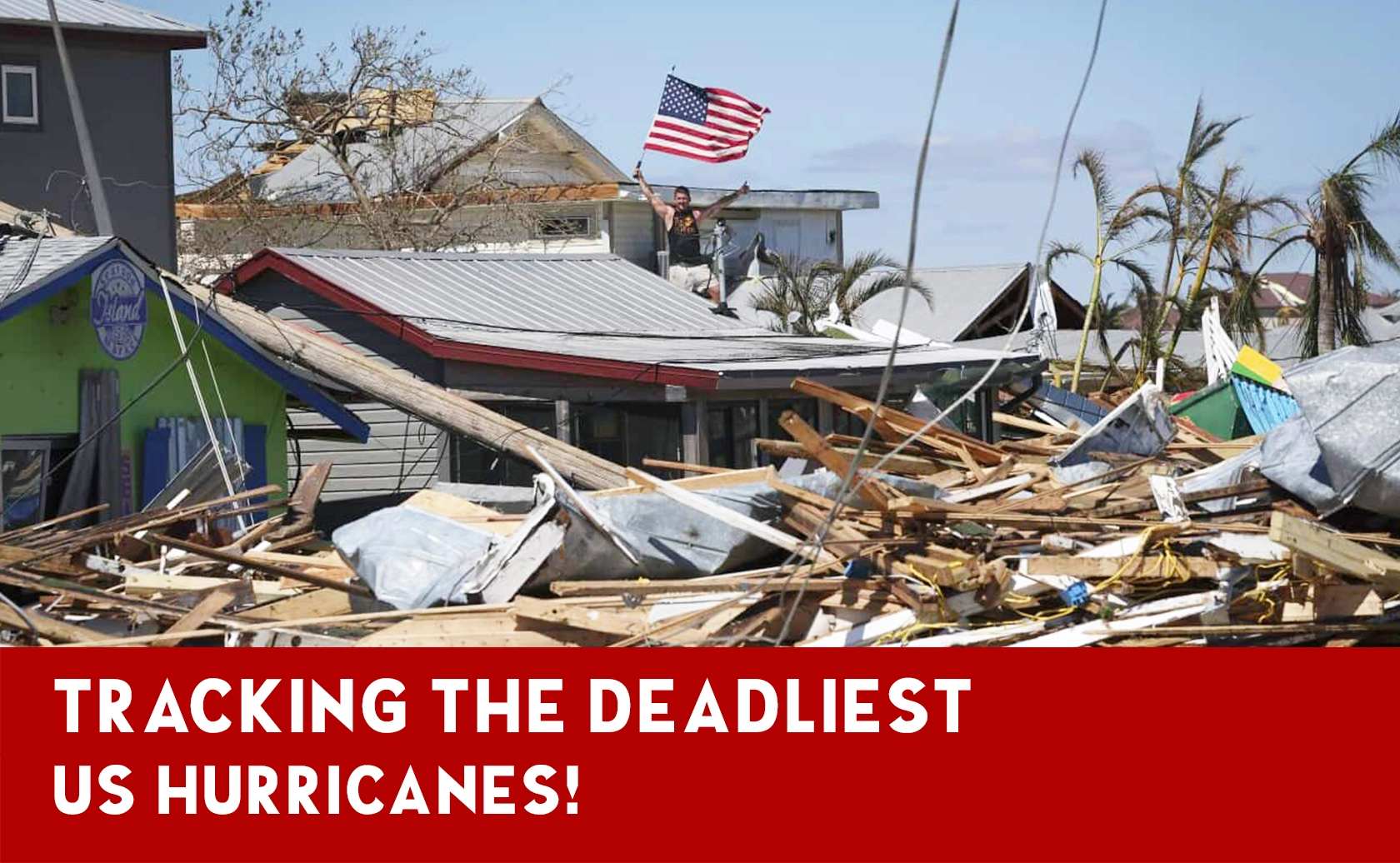Hurricanes in the United States have been a recurring and formidable force in American history, leaving behind trails of devastation and reshaping communities. These powerful storms have not only tested the resilience of American cities but have also underscored the importance of preparedness and adaptation in the face of natural disasters. From the catastrophic Great Galveston Hurricane of 1900 to the more recent Hurricane Katrina in 2005, hurricanes in the USA have consistently demonstrated their potential to alter landscapes, economies, and lives.
Table of Contents
ToggleEarly Encounters: The Great Galveston Hurricane
One of the most pivotal moments in American hurricane history is the Great Galveston Hurricane of 1900. This Category 4 storm made landfall on September 8, 1900, bringing with it storm tides that inundated the entire island of Galveston, Texas. The disaster resulted in an estimated 8,000 deaths, making it the deadliest natural disaster in U.S. history15. The aftermath of this tragedy led to significant changes in hurricane forecasting and preparedness, including the construction of the Galveston Seawall to protect the city from future storms.
The Evolution of Hurricane Forecasting
Over the years, advancements in meteorology and technology have dramatically improved hurricane forecasting. Early warning systems, satellite imaging, and computer models now provide critical hours or even days of notice before a storm hits, allowing for evacuations and preparations that save countless lives. However, despite these advancements, hurricanes continue to pose significant threats due to their unpredictable nature and the ever-growing population in coastal areas.
Political Machines APUSH Definition: Influence, Corruption, and Impact on U.S. History
The Devastation of Hurricane Katrina
Hurricane Katrina, which struck in 2005, remains one of the most devastating hurricanes in U.S. history. It made landfall as a Category 3 hurricane along the Gulf Coast, particularly affecting New Orleans, Louisiana. The failure of levees in New Orleans led to catastrophic flooding, displacing hundreds of thousands and resulting in over 1,392 fatalities26. The economic impact was staggering, with damages estimated at over $200 billion, making it the costliest hurricane in U.S. history2. Katrina highlighted the vulnerability of urban infrastructure and the need for robust disaster management systems.
Economic and Social Impacts
Hurricanes not only cause immediate destruction but also have long-lasting economic and social effects. The aftermath of a hurricane often leads to significant government spending on relief efforts and infrastructure repairs. Additionally, there is a substantial increase in government transfer payments, such as unemployment insurance, to support affected communities4. However, these efforts can also strain public budgets, potentially diverting funds from long-term health investments and other critical services3.
Case Study: Hurricane Hazel
Hurricane Hazel, which made landfall in 1954, is another notable example of a hurricane’s destructive power. It struck the Carolinas as a Category 4 hurricane, causing widespread damage and loss of life. Although Hazel’s impact was severe, it also highlighted the importance of rapid storm movement in limiting damage. The storm’s quick passage across the eastern United States into Canada reduced the overall impact compared to slower-moving storms like Katrina1.
Environmental and Ecological Impacts
Beyond the immediate destruction, hurricanes can have profound environmental and ecological effects. Storm surges can lead to saltwater intrusion into freshwater sources, affecting local wildlife and ecosystems. Additionally, the debris and pollution generated by hurricanes can contaminate waterways and soil, posing long-term environmental challenges3.
Adaptation and Resilience
In response to the recurring threat of hurricanes, communities across the United States have developed strategies to enhance resilience. This includes investing in flood-resistant construction, improving drainage systems, and implementing early warning systems. Moreover, there is a growing emphasis on climate change mitigation to reduce the intensity and frequency of these storms.
The Role of Technology in Hurricane Response
Technology plays a crucial role in both predicting and responding to hurricanes. Advanced weather models allow for more accurate forecasting, while drones and satellite imagery help assess damage and guide relief efforts. Social media platforms have also become vital tools for disseminating critical information and coordinating community responses during emergencies.
Looking Forward: Challenges and Opportunities
As the United States continues to face the challenges posed by hurricanes, there are both opportunities and challenges ahead. The integration of climate change mitigation strategies into disaster planning could reduce the severity of future storms. However, the increasing population in coastal areas and the potential for more intense hurricanes due to climate change mean that the nation must remain vigilant and proactive in its approach to hurricane preparedness.
FDA Cracks Down on Red Dye 3: The Facts Behind the Ban
Conclusion
Hurricanes have left an indelible mark on the history of the United States, from the devastating Great Galveston Hurricane to the more recent tragedies like Hurricane Katrina. These storms serve as reminders of nature’s power and the importance of resilience and preparedness. As the nation moves forward, it must continue to innovate and adapt, leveraging technology and policy to mitigate the impacts of these powerful storms and ensure a safer future for generations to come.
Appendix: Notable Hurricanes in U.S. History
| Hurricane Name | Year | Category at Landfall | Notable Impact |
|---|---|---|---|
| Great Galveston | 1900 | Category 4 | Deadliest U.S. hurricane; 8,000 deaths15 |
| Lake Okeechobee | 1928 | Category 4 | Devastating flooding in Florida; 2,500 deaths5 |
| Katrina | 2005 | Category 3 | Costliest U.S. hurricane; over $200 billion in damages26 |
| Hazel | 1954 | Category 4 | Rapidly moved across the eastern U.S. into Canada1 |
| Camille | 1969 | Category 5 | One of the most intense hurricanes to hit the U.S.5 |




